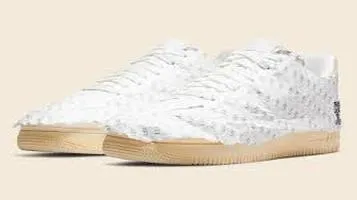Review of Rayon Fabric: An Analysis of Its Properties, Uses, and Sustainability
Rayon is a versatile, semi-synthetic fiber made from cellulose, primarily derived from wood pulp. Known for its silk-like feel and drapability, it is often used in clothing and textiles as a cost-effective alternative to natural silk. Rayon is appreciated for its softness, breathability, and ability to absorb moisture, making it ideal for warm-weather garments such as summer dresses, blouses, and activewear. However, it wrinkles easily and can be sensitive to water and heat, requiring careful handling during washing and ironing. Available in various forms like viscose, modal, and lyocell, rayon offers different characteristics and environmental impacts. Its production process historically involved chemicals like carbon disulfide, but advancements are striving for more sustainable methods.

Rayon, a semi-synthetic fiber, has long been a staple in the textile industry due to its versatile properties and relatively low production costs. Derived from natural cellulose, typically sourced from wood pulp, rayon stands out for its silk-like feel, breathability, and ability to blend seamlessly with other fibers. However, it also faces scrutiny regarding its environmental impact and durability. This review delves into the various aspects of rayon, exploring its properties, applications, and the sustainability concerns that surround it.
Properties of Rayon
One of rayon’s most notable characteristics is its softness and smooth texture, which closely mimics the luxurious feel of natural silk. This makes it a popular choice for clothing items that demand a high level of comfort, such as blouses, dresses, and lingerie. Additionally, rayon has excellent drapability, allowing garments to flow elegantly and maintain a flattering fit.
Rayon is also highly absorbent, more so than cotton, which makes it an ideal fabric for warm weather clothing as it can wick moisture away from the skin. Its breathability is another advantage, offering comfort in humid climates and making it a preferred choice for summer wear.
However, rayon does have some inherent weaknesses. It tends to wrinkle easily, which can be a drawback for garments that need to maintain a crisp appearance. Additionally, rayon's strength is notably reduced when wet, making it more prone to damage during washing. This necessitates careful laundering—often hand washing or dry cleaning is recommended to preserve the fabric’s integrity.
Uses of Rayon
Rayon’s versatility extends beyond apparel. It is widely used in home textiles, including bed linens, curtains, and upholstery, owing to its softness and aesthetic appeal. Its ability to take on vibrant dyes also makes it a favorite for creating colorful and patterned fabrics.
In the medical field, rayon finds applications in surgical products and hygiene items like bandages and sanitary napkins, due to its absorbency and softness against the skin. Moreover, rayon is employed in industrial uses, such as in tire cords and other reinforcement materials, highlighting its adaptability across different sectors.
Sustainability Concerns
While rayon is often marketed as an eco-friendly alternative to synthetic fibers due to its natural origins, its production process raises significant environmental concerns. The transformation of cellulose into rayon involves the use of hazardous chemicals like carbon disulfide, sulfuric acid, and sodium hydroxide. These substances can pose serious health risks to workers and contribute to environmental pollution if not managed properly.
Deforestation is another critical issue. The demand for wood pulp to produce rayon can lead to the depletion of forests, particularly in regions where sustainable forestry practices are not enforced. This not only affects biodiversity but also contributes to carbon emissions, undermining the environmental benefits of using a naturally derived fiber.
Innovations in the production of rayon, such as the development of lyocell (a type of rayon made using a more environmentally friendly process), offer some hope for mitigating these concerns. Lyocell production employs a closed-loop process that recycles the majority of the solvents used, reducing the environmental footprint. However, lyocell is generally more expensive to produce, which can limit its adoption compared to traditional rayon.
Durability and Care
The durability of rayon is another point of contention. While it offers a luxurious feel and aesthetic appeal, its tendency to lose strength when wet and its susceptibility to wrinkling can be drawbacks. Proper care is essential to maintain the longevity of rayon garments. This often means adhering to specific washing instructions, such as hand washing in cold water and avoiding high heat during ironing.
Advancements in fiber technology have led to the creation of blended fabrics, where rayon is combined with other fibers like polyester or cotton to enhance its durability and ease of care. These blends can retain the desirable qualities of rayon while mitigating some of its weaknesses.
Conclusion
Rayon remains a popular choice in the textile industry due to its comfort, versatility, and aesthetic qualities. Its ability to mimic the luxurious feel of silk at a fraction of the cost makes it accessible to a wide range of consumers. However, the environmental and durability challenges associated with rayon cannot be overlooked.
As the demand for sustainable and eco-friendly textiles grows, the future of rayon will likely depend on continued innovation and improvements in production processes. Efforts to develop more sustainable alternatives, such as lyocell, and to enforce responsible forestry practices are crucial steps in addressing the environmental impact of rayon.
In summary, while rayon offers significant advantages in terms of comfort and versatility, its environmental footprint and durability issues present challenges that need to be carefully managed. Consumers and manufacturers alike must weigh these factors when considering the use of rayon in textiles.






